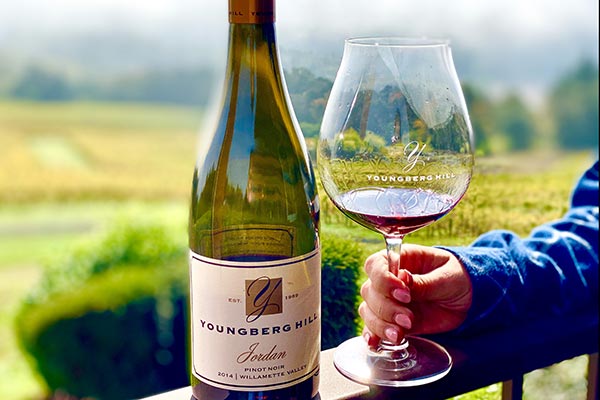Cool start but later season warm temperatures deliver an early harvest; many winemakers and growers report plentiful crop with larger than normal, ripe clusters
September 24, 2009 — Oregon experienced a relatively dry, cold winter and early spring followed by a mostly warmer and drier than normal May through September, with average to above average heat accumulations indicating good overall growth and ripening conditions, according to Dr. Greg Jones, a climatologist at Southern Oregon University in Ashland, Oregon who monitors conditions throughout the state’s winegrowing regions.
The 2009 vintage cumulative growing degree day (GrDD) values for Roseburg (2,711), Medford (3,094), and Milton-Freewater (3,156) show a 7 to 15 percent increase through Sept. 22 vs. same period 2008, currently ahead of the last six growing seasons, and tracking the warm 2004 and 2006 vintages. For McMinnville (1,993), there is a 9 percent increase over last year at this time, but units are slightly below the six-year average (See Attached Charts 1 and 2).
Wide swings with both record high and record low maximum temperatures were observed statewide, but with little to no effect on plant growth or fruit quality, Jones said. A July heat wave that brought several days of extreme temperatures produced some sunburned clusters, but higher crop levels allowed for removal of sun-affected berries.
Harvest has officially started in all regions, with the bulk of activity in the Willamette Valley expected to begin the end of this week and into the next few weeks for all varieties, including Pinot noir. In the Columbia Gorge, some whites are coming in, with Pinot noir and other red varieties mostly still ripening on the vine. In the Walla Walla Valley, nearly all whites are in and significant quantities of Merlot and Syrah are being picked. In Southern Oregon, Chardonnay, Pinot noir, Syrah, Tempranillo, Cabernet Sauvignon and Merlot are starting to be harvested and will continue over the next few weeks.
Bud break dates were near average to two weeks late depending on region and cultivar, while bloom and veraison occurred at near average dates statewide, according to Jones.
Statewide, 2009 rainfall has been below average (See Attached Chart 3). Rain events in August and over the Labor Day weekend in the Willamette Valley allowed for continued physiological maturation of the vines and did not negatively affect the crop, according to various growers and winemakers. Rain received the weekend of September 19th and 20th elevated botrytis pressure, and growers responded with spray regimes in affected areas. Southern Oregon, Columbia Gorge and the Walla Walla Valley, on the other hand, reported minimal rain and low disease pressure, although some Southern and Eastern Oregon sites were affected by a frost in 2008, which held 2009 yields back.
Growers and winemakers report a healthy crop of large, tight clusters that are ripening evenly thanks to the late season warm weather. Crop yields are higher than 2008 in the Willamette Valley, with near normal cluster sizes and yields in the Columbia Gorge, Walla Walla Valley and Southern Oregon, except where frost damage occurred.
“The current dry spell enables another long growing season, ideal for full, gradual flavor development across the state,” said Ted Farthing, executive director of the Oregon Wine Board. “Our boots are sometimes muddier this time of year, so cautious smiles prevail today amongst our growers and winemakers.”
The current short to long term forecasts call for continued above normal temperatures and below normal rainfall for the remainder of September and October, according to Jones.
The outlook has the 2009 vintage coming in above average in terms of heat accumulation, allowing growers to harvest in very good conditions.
For a list of regional spokespersons or additional insight on the 2009 vintage, please contact Stephany Boettner, Marketing & Communications Director of the Oregon Wine Board, at stephany@oregonwine.org or 503.228.8652.









